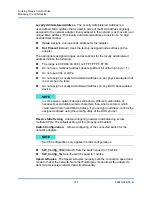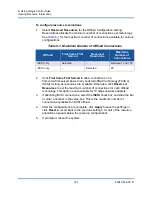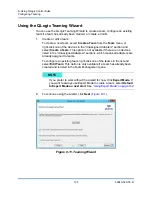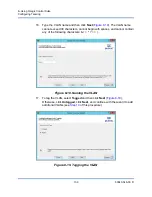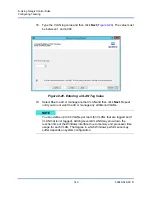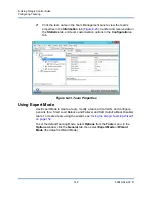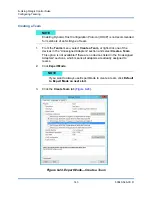
8–Using QLogic Control Suite
Configuring Teaming
129
83840-546-00 D
Configuring Teaming
The teaming function allows you to group any available network adapters together
to function as a team. Teaming is a method of creating a virtual NIC (a group of
multiple adapters that functions as a single adapter). The benefit of this approach
is that it enables load balancing and failover. Teaming is done through the ASP
software.
Teaming can be accomplished by either of the following methods:
Using the QLogic Teaming Wizard
Consider the following when configuring teaming:
If you do not enable LiveLink™ when configuring teams, disabling Spanning
Tree Protocol (STP) at the switch is recommended. This minimizes the
downtime due to spanning tree loop determination when failing over.
LiveLink mitigates such issues.
ASP is available only if a system has one or more QLogic network adapters
installed.
To physically remove a teamed NIC from a system, you must first delete the
NIC from the team. Not doing this before shutting down the system could
result in breaking the team on a subsequent reboot, which may result in
unexpected team behavior.If an adapter is included as a member of a team
and you change any advanced property, then you must rebuild the team to
ensure that the team’s advanced properties are properly set.
You must have administrator privileges to create or modify a team.
The load balance algorithm in a team environment in which members are
connected at different speeds favors members connected with a higher
speed link over members connected at lower speed links until a threshold is
met. This is normal behavior.
In a GEC or 802.3ad type team, disabling the device driver(s) of a team
member that has IPMI enabled may prevent a successful failover since IPMI
maintains link with the attached switch.
Do not assign a Locally Administered Address on any physical adapter that
is a member of a team.
NOTE
QCS does not support teaming on Linux systems. Linux provides a similar
feature called Channel Bonding. Refer to the Linux OS documentation for
more information.
Summary of Contents for 8400 Series
Page 390: ......



